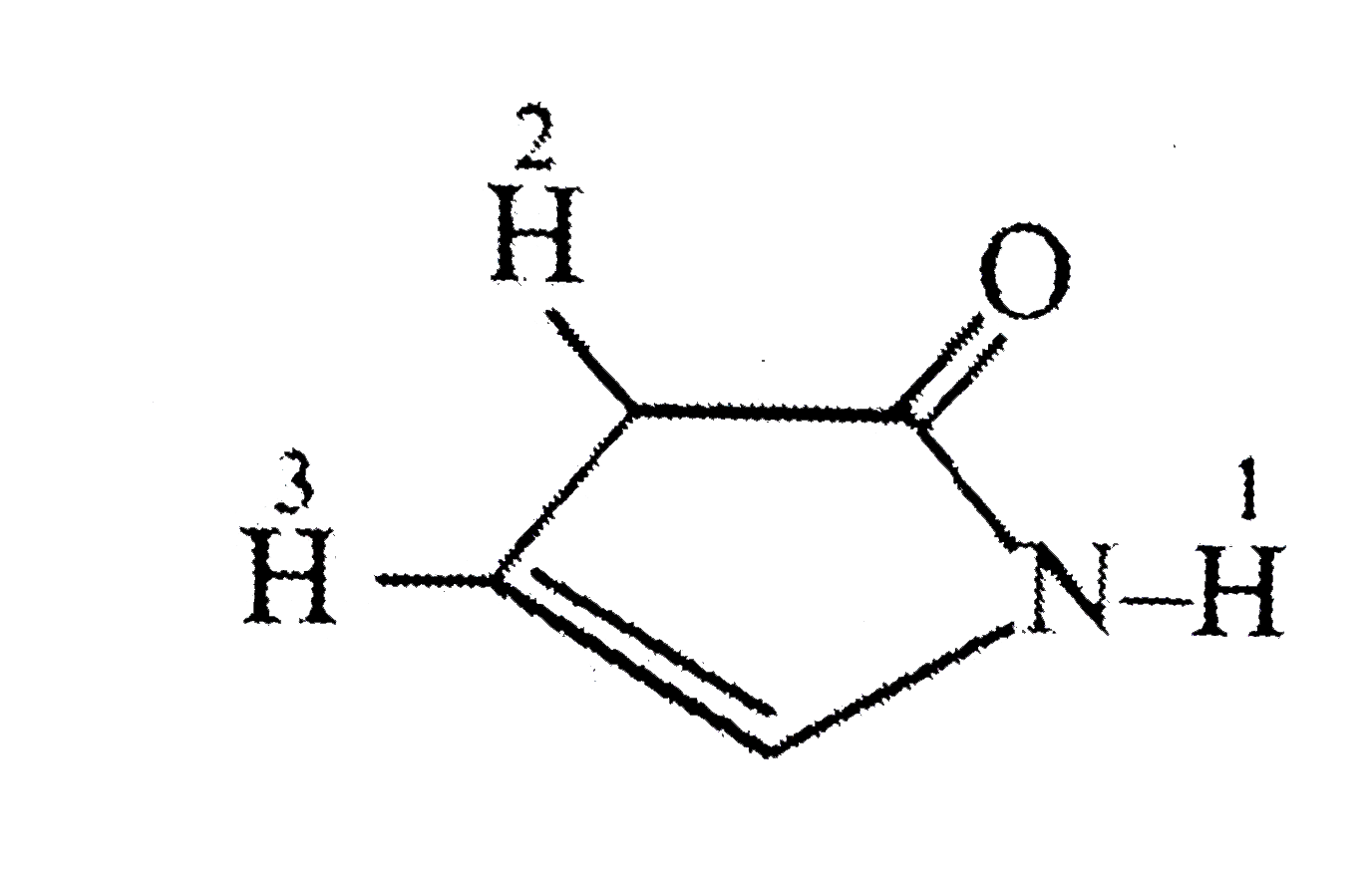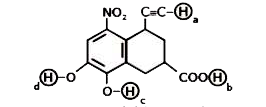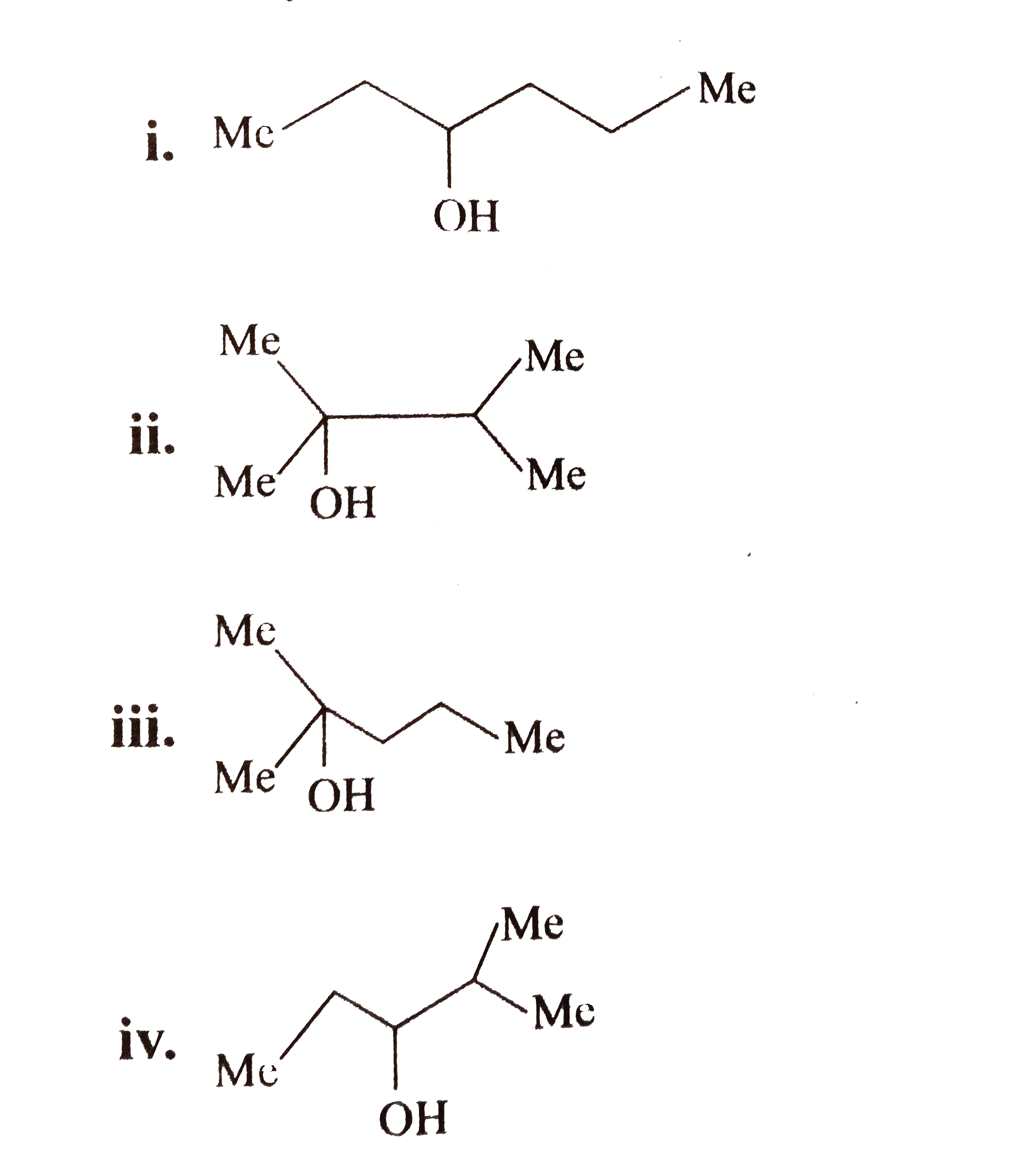Arrange 1∘,2∘,3∘ liquid alcohols in decreasing order of acidities.
To arrange the 1° (primary), 2° (secondary), and 3° (tertiary) liquid alcohols in decreasing order of acidity, we need to consider the stability of the alkoxide ion that forms when the alcohol loses a proton (H⁺). The acidity of alcohols is influenced by the stability of this alkoxide ion, which is affected by the electron-donating or electron-withdrawing effects of the alkyl groups attached to the hydroxyl (-OH) group.
1. Understand Alcohol Structure:
- Primary alcohol (1°): R-CH2OH (where R is an alkyl group)
- Secondary alcohol (2°): R1-CHOH-R2 (where R1 and R2 are alkyl groups)
- Tertiary alcohol (3°): R1R2R3C-OH (where R1, R2, and R3 are alkyl groups)
2. Identify Alkoxide Ion Formation:
- When an alcohol donates a proton (H⁺), it forms an alkoxide ion (R-O⁻). The stability of this ion is crucial for determining acidity.
3. Assess Alkyl Groups' Effects:
- Alkyl groups are electron-donating (they have a +I effect). The more alkyl groups attached to the carbon bearing the hydroxyl group, the more electron density is pushed towards the oxygen in the alkoxide ion, making it less stable.
4. Rank the Alcohols Based on Stability:
- Methyl alcohol (CH3OH) has no alkyl groups donating electrons, making its alkoxide ion (CH3O⁻) more stable.
- Primary alcohols (R-CH2OH) have one alkyl group, which donates some electron density, making the alkoxide ion less stable than that of methyl alcohol.
- Secondary alcohols (R1-CHOH-R2) have two alkyl groups, further decreasing the stability of the alkoxide ion.
- Tertiary alcohols (R1R2R3C-OH) have three alkyl groups, making their alkoxide ion the least stable due to maximum electron donation.
5. Conclusion:
- Based on the stability of the alkoxide ions, the order of acidity from highest to lowest is:
- Methyl alcohol (most acidic)
- Primary alcohol (1°)
- Secondary alcohol (2°)
- Tertiary alcohol (3° least acidic)
Final Order:
Methyl alcohol > 1° alcohol > 2° alcohol > 3° alcohol
- Primary alcohol (1°): R-CH2OH (where R is an alkyl group)
- Secondary alcohol (2°): R1-CHOH-R2 (where R1 and R2 are alkyl groups)
- Tertiary alcohol (3°): R1R2R3C-OH (where R1, R2, and R3 are alkyl groups)
- When an alcohol donates a proton (H⁺), it forms an alkoxide ion (R-O⁻). The stability of this ion is crucial for determining acidity.
- Alkyl groups are electron-donating (they have a +I effect). The more alkyl groups attached to the carbon bearing the hydroxyl group, the more electron density is pushed towards the oxygen in the alkoxide ion, making it less stable.
- Methyl alcohol (CH3OH) has no alkyl groups donating electrons, making its alkoxide ion (CH3O⁻) more stable.
- Primary alcohols (R-CH2OH) have one alkyl group, which donates some electron density, making the alkoxide ion less stable than that of methyl alcohol.
- Secondary alcohols (R1-CHOH-R2) have two alkyl groups, further decreasing the stability of the alkoxide ion.
- Tertiary alcohols (R1R2R3C-OH) have three alkyl groups, making their alkoxide ion the least stable due to maximum electron donation.
- Based on the stability of the alkoxide ions, the order of acidity from highest to lowest is:
- Methyl alcohol (most acidic)
- Primary alcohol (1°)
- Secondary alcohol (2°)
- Tertiary alcohol (3° least acidic)
Methyl alcohol > 1° alcohol > 2° alcohol > 3° alcohol
Topper's Solved these Questions
- ALCOHOLS, PHENOLS AND ETHERS BOOK - ICSECHAPTER - ALCOHOLS, PHENOLS AND ETHERS EXERCISE - EXERCISE (PART-I Objective Questions)
25 Videos
- ALCOHOLS, PHENOLS AND ETHERS BOOK - ICSECHAPTER - ALCOHOLS, PHENOLS AND ETHERS EXERCISE - EXERCISE (PART-I Objective Questions) (Choose the correct alternative)
52 Videos
- ALCOHOLS , PHENOLS AND ETHERS BOOK - ICSECHAPTER - ALCOHOLS , PHENOLS AND ETHERS EXERCISE - SOURCE BASED QUESTIONS
4 Videos
- ALDEHYDES, KETONES AND CARBOXYLIC ACIDSBOOK - ICSECHAPTER - ALDEHYDES, KETONES AND CARBOXYLIC ACIDSEXERCISE - EXERCISE (PART-II DESCRIPTIVE QUESTIONS) ( LONG ANSWER QUESTIONS)
478 Videos
Similar Questions
Arrange the 1∘,2∘ and 3∘ alcohols in increasing order of basicities.
View SolutionThe decreasing order of acidic character is :
View SolutionArrange the following in decreasing order of acidity

View SolutionArrange hypohalous acids in decreasing order of acidic nature.
View SolutionArrange the following alcohols in the decreasing order of reactivity towards
Lucas reagent
(1) 1-Butanol
(2) 2-butanol
(3) 2-Methyl-2-propanol.
View SolutionArrange marked atom in decreasing order of acidic strength

View SolutionArrange in decreasing order of reactivity with HCl :

View SolutionArrange the followig labelled hydrogens in decreasing order of acidity :

View SolutionArrange hypohalous acids in decreasing order of stability.
View SolutionArrange the following alcohols in the decreasing order of
dehydration with conc. H2SO4.

View Solution
